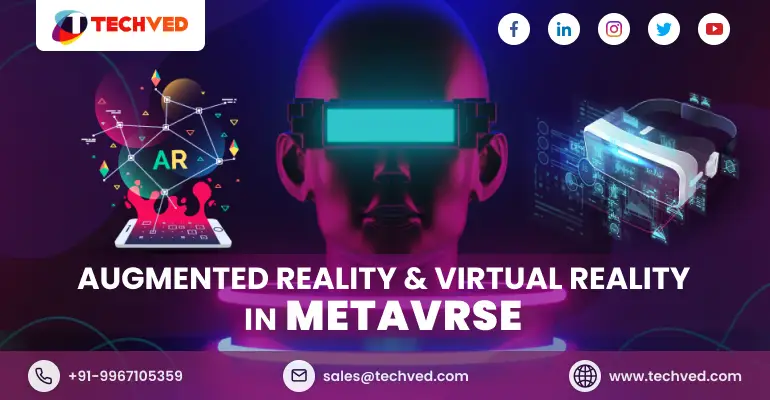“Metaverse” is the most trending word in the technology and digital industry as of today. This word has penetrated deep into the demographics of the globe and almost every individual who has some knowledge or access to the web world is aware about this most trending tech word – Metaverse. Billions of dollars are being pumped into Metaverse tech and top investors and tech giants from around the world have betted their money to accelerate this technology and make is accessible to the masses.
Even though Metaverse came into the limelight and became a global topic of discussions only during the pandemic, after Mark Zuckerberg changed Facebook to Meta, the Metaverse theory has been around since a few decades now. Yes, the term Metaverse was first coined in a sci-fi novel by the American writer Neal Stephenson “ Snow Crash” which was published in 1992. In this novel, Stephenson greatly emphasizes on identity, he says that identity can be depicted as fragmented, precarious and negotiable. In the novel, Stephenson showcases Metaverse to be the successor of the Internet. A technologically powered immersive space where people can switch up their identity and lead a real-like life parallel to their real world life. It may be surprising for many at that time, and not many took it very seriously either, however, with the evolution of technology, this concept is now becoming more and more real and adoptable for people all around the world. Yes, the Metaverse isn’t a thing of the future anymore, it is happening now and we are living in it. Millions of attendees have already witnessed Metaverse concerts, fashion shows, conferences etc. and Gartner predicts that by 2026, 25% of people will spend at least 1 hour everyday on the Metaverse. Another report by Gartner states that by 2026, 30% of businesses will have Metaverse compliant services and products.
Now let’s understand a little about what exactly is the Metaverse Technology
The Metaverse is a platform that allows its users to experience a completely immersive environment in the virtual world. Users can put on Augmented Reality (AR) and Virtual Reality (VR) wearable devices and enter this virtual world where they can carry out their day to day activities like work, school, college, grocery shopping, playing games, walking in a garden, meeting friends and relatives etc. all from the comfort of their couch. It is envisioned to change the face of reality, the way digital interactions take place now a days. It will give people a 3 dimensional experience as opposed to the 2 dimensional experience the Web 2.0 offers. This means that people can not only see and interact with others, instead they can also feel other people and object around them just like how they would in the real world atmosphere. The Metaverse technology is considered to be the biggest breakthrough in the digital world and is envisioned to elevaten digital human interactions to a level never experienced by mankind before.
Imagine if you could attend a conference in USA at 11am and yet be able to attend a concert in Australia at 5pm and also be able to have dinner with your family at home at 9pm, all in one single day – The Metaverse breaks all demographic barriers and allows you to do so without needing to stamp your passport, or buy travel tickets, saving you time, money and effort. The reason why Metaverse tech is gaining so much popularity and recognition is because of its unique offerings for the human race. A very vital offering of the Metaverse technology is that it is decentralized. This means that one person or company has control or monopoly over it. Unlike Web 2.0, where big tech players hold the power over digital movements and presence of the audience, in the Metaverse, every individual will be responsible for their own footprint and presence, eliminating the need for any third party to hold command over their digital appearance. This gives complete control to the user.
Top 3 Metaverse Components
1. Augmented Reality (AR) & Virtual Reality (VR)

Augmented Reality aka AR and Virtual Reality aka VR are the main driving factors that allow users to enter the Metaverse. Without these no individual can enter the Metaverse and experience it. Augmented Reality (AR) and Virtual Reality (VR) are technologies that infuse the virtual world with 3D experiences. They are Metaverse components that stimulate 3D interactions and modelling in the virtual environment. They blend fictional visual elements into the digital world to give a real-life like feeling to it. Augmented Reality & Virtual Reality can be considered as the major Metaverse components.
2. Artificial Intelligence (AI)

Artificial Intelligence aka AI has the potential to grasp user inputs and generate responses and simulations accordingly and accurately. It is a major Metaverse component as it will help the environment more user friendly and user adaptive in nature. Artificial Intelligence (AI) can be leveraged to build avatars, leverage Natural Language Processing (NPL), build voicebots, build chatbots, build videobots etc to give users a smooth and interactive experience in the Metaverse. It is a very powerful tool to give users a real-world environment in a virtual set up. Intelligent networking, safety and security and smart and personalized experiences are a few more implementations of AI in the Metaverse.
3. Blockchain Technology

Blockchain technology is the software Metaverse exists on, it can be considered as the backbone of the Metaverse, without which the Metaverse cannot exist. Blockchain enables the open, interconnected and decentralized features of the Metaverse. It helps support immutable data storage and transactions that allow free flow of digital currencies and digital footprints. It is a distributed ledger that provides the provenance of digital assets and identities on the platform. It is considered to be the safest technology and is a top component of the Metaverse technology.
Conclusion
The Metaverse technology is not a thing of the future anymore, it is here and has arrived. Brands have already started with their Metaverse journey and millions of people around the world have already experienced it too. It is here to stay and it undoubtedly will change the way human-digital interactions take place for the future generations to come.